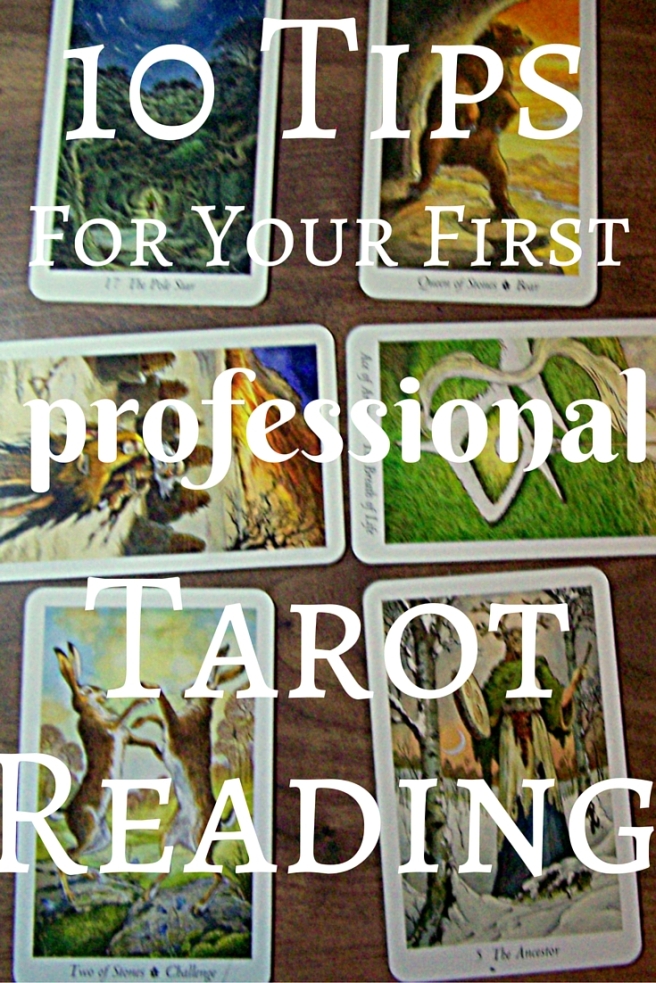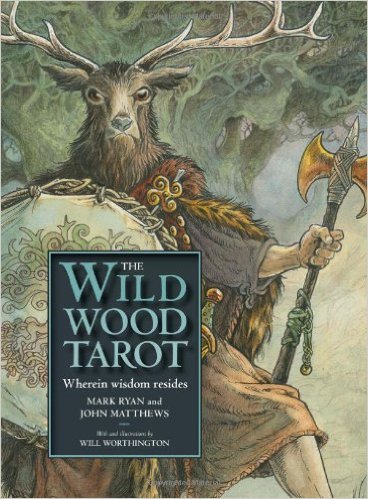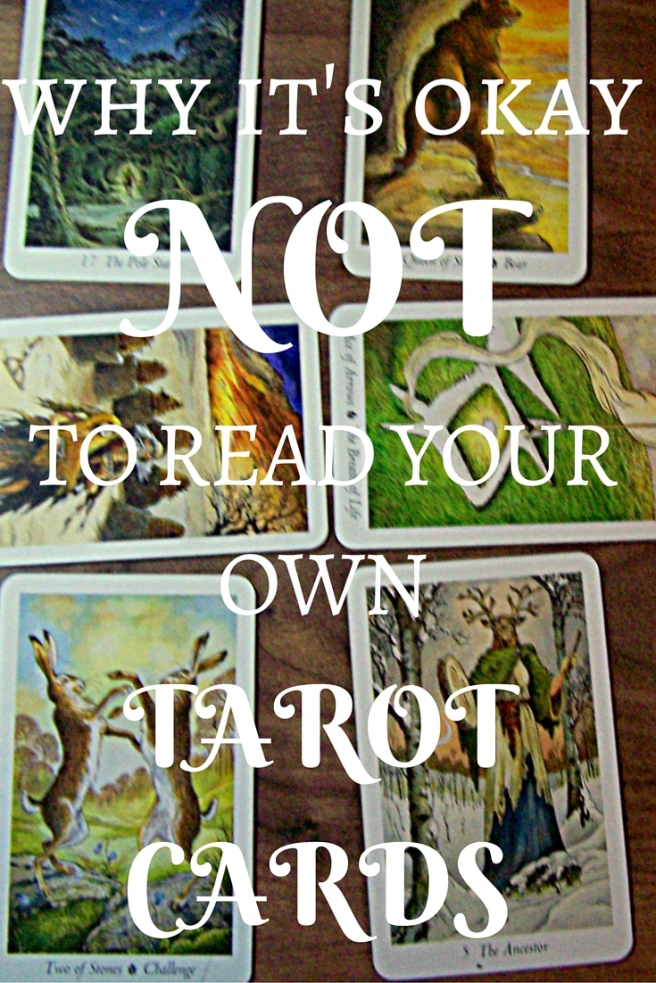
- Stay calm
There are three types of Tarot clients.
- Excitable clients who wants a giggle and a laugh
- Nervous clients who may be frightened of what you may show them, or it’s their first time
- Skeptics
All of these types (and more than likely ones that don’t fit in neat boxes) will smell weakness like a weakness-smelling thing. You gotta fake it till you make it, and then fake it a bit more. Public speaking is never wholly comfortable, and telling someone their fortune is always scary because you never quite know how someone is going to react.
They’ll react a LOT better if they trust you, and no one trusts someone whose mouth is running away with them, or who looks timid and closed off.
Head up, shoulders straight and remember that they believe in you enough to pay for this.
- Stay silent
This here is a rule for life. If you’ve got nothing to say, stay silent. If they ask why you’re quiet, just tell them the truth – you’re thinking!
If you must fill the gap because your client is antsy, tell them why it takes a while to grab the thread of a reading – all those possible symbols and meanings.
Don’t fill the gap with rubbish and half formed theories. It makes you look unconfident at best, and incompetent at worst. Start when you’re ready. It’s okay to pause and relook at the cards halfway through. You want to deliver a good service, not a lightning fast one.
- Be upfront about what is expected from them
A lot of Tarot clients are nervous because they don’t know what to expect. Not everyone has even heard of tarot.
Spend some time explaining things to them, either before they book a reading, or before the reading begins.
Are they allowed to touch your cards? Do you want them to remove conspicuous jewellery and accessories? Are they allowed to ask questions once you’ve started? What do you want them to do, and how do you expect them to behave?
- Be aware of differing religions
Not everyone is of the same religion, and just because your client is another reader, don’t expect them to believe exactly the same things you do! Even when you are of the exact same religion, realise that people’s experiences with the divine or spirits will differ. My experience as a Tarot reader is influenced heavily by my experiences as a modern witch. That experience will differ completed to an atheist, a Wiccan, or a Hellenic Recon!
And that’s okay.
We clearly all either believe in Tarot or are open-minded towards it, just be aware that not everyone will be happy to hear they have an angel following them, for example.
- Be upfront about what you can’t or won’t do
Sometimes, what you can read on depends on your local laws. Other times, it’s best to stick to a strict code of ethics. This can vary from reader to reader, but you must tell your clients before they book to avoid disappointed clients and possibly even a lawsuit!
To avoid lawsuits, there are a few things you should avoid doing at all costs
- Reading for children. This usually counts as anyone underage, so for the UK it’s 18. Anyone under 18 can be classed as a ‘vulnerable person’. I don’t care how mature they are, if you are taking theirs or their parents money, you can be sued for doing this, if either your information is inaccurate, or you are perceived to have caused distress, or you are accused of being a fraud. And even if you give the best reading in the world, you can still be sued for it, because they’re classed as vulnerable.
- Other sorts of vulnerable people, which can include those with mental disabilities, illnesses or in a vulnerable or distressed state of mind. There is no easily tickable box here, so err on the side of caution. If you feel uncomfortable, you can turn people away purely on the fact you feel they aren’t ready. If the person seems of right and able mind at that point, there’s no reason you can’t read for someone who’s, say, depressed. However, if they’re talking about suicide or something like that, they need a helpline or a therapist, not a Tarot reader. You can also always refund money if you think you shouldn’t have read for someone.
- Never read on medical or legal issues. It puts you in two sticky situations – one, any medical or legal issue that someone is asking a Tarot reader is major enough to cause serious distress, which makes them a vulnerable person, and two, if they take your advice and something goes tits up, guess who’s ass is on the line again? Yep, it’s yours. Even with the ‘not a medical or legal professional’ disclaimer that you should have, I still would not recommend reading on these subjects.
It’s also perfectly okay to have a personal blacklist. I won’t read for questions about death, the dying or other sorts of spirits. I won’t do it for personal reasons, and it’s okay for you to have your own blacklist, whatever that looks like. So long as you tell your clients before they book.
- Practice on a friend
I’m sure you’ve practiced your skills on friends before, but ask a friend to sit through a more ‘professional’ reading and give you some honest feedback. Perhaps convince a friend of a friend to sit for you and give you that feedback in exchange for a free reading, so you can ‘blind’ read on subjects that you don’t previously know about.
- It’s okay to have a cheat sheet!
There’s nothing wrong with having a handy sheet with some keywords on it in case you suddenly draw a blank, or wonder if you’re reading a card correctly.
However, there’s a difference between quickly glancing at a sheet to confirm a hunch, to fumbling around in your bag for a guidebook or grubby bit of paper.
A nice laminated or decorated sheet somewhere around the table looks fine, and you can just say ‘Just checking a hunch,’ grab the paper, read it, and move back on with the reading. It’s as simple as that.
- Be prepared to answer questions about Tarot
Your clients will be at varying levels of Tarot knowledge, so expect different questions and be able to answer them. A good background on what Tarot is, where it comes from (it’s not where you think), and how to use it. Extensive knowledge is not required, but it is a good asset. You love Tarot, so why would you not research stuff? If you’d like to know more about Tarot, stick around. I’ve got a series of posts scheduled soon, or you can follow my Tarot board on Pinterest.
- Be prepared to answer questions about every occult subject under the sun – also know that ‘I don’t know’ is an okay answer
People are at different knowledge levels of Paganism/witchcraft/Tarot etc, so expect them to expect you to know Everything about Everything. Don’t assume that just total newbies will ask you stuff, or get stuff wrong – I know readers of 30+ years’ experience not know the difference between Wicca and witchcraft.
Before the Internet, you struggled to find information about non-Christian religions, so misinformation was rife, and there is a certain publishers who will literally publish anything, regardless of whether it’s true. So, rumours abound, and it’s good to get a handle on a few of the common ones.
Again, you can’t be expected to know everything, but expect to be asked. ‘I don’t know,’ is a perfectly acceptable answer. There’s also ‘That’s interesting. I’ll look into that,’ which is useful whether or not you genuinely do find whatever your client has said interesting.
- Listen to the client.
I don’t know how many times I’ve had someone come up to me and complain about a Tarot reader or psychic telling them they’re going to become pregnant, when they’re infertile or in a committed relationship with someone without the correct genitals for that whole shebang. Or their husband will leave them for the other woman when he’s actually dead or something like that. Heard it all, and I wish I hadn’t. *
Even on the small things, listen to the client when they’re in front of you. They probably know their own lives better than you do! If someone is correcting you, that’s good. That means you weren’t wrong on the other stuff, and now they trust you enough to engage, correct you and ask questions and work with you, which is precisely what you want from a client, especially repeat ones. No Tarot reader is going to be 100% right. I think the best of us could probably aim for 80% with hard work and effort. But never take a correction as an insult, and always listen to the client. If you’ve told them their sister will betray them, and they say they haven’t a sister, consider the cards might be referring to a close female relationship, rather than a sister. Don’t let it throw you.
If you’re looking for ways to improve your readings further, try my 5 Tips for Pro Readers.
*Please don’t complain about Tarot readers to other Tarot readers. Either complain to the one who caused you the issue, or complain to Trading Standards. It’s rude, and it can hurt our business if you do it online, or when we’re at our stalls at public fairs. Yes, this one happened recently.

out of it, use the wire to build tools or jewelry, or you can add it into crystal grids.




 A lot of the paid readings I do are for other magic-y -woo types, often other Tarot readers. A lot, okay. I myself have purchased Tarot readings from other Tarot readers, and I will continue to do.
A lot of the paid readings I do are for other magic-y -woo types, often other Tarot readers. A lot, okay. I myself have purchased Tarot readings from other Tarot readers, and I will continue to do. This is a tutorial for what I call a ‘working book’. As in, I write or draw or stick things in it until it is full, and that is the only criteria. It is not meant for display, or to be indexed. It is a book that you ‘show your work in’, to borrow a maths phrase, not a text book. It can be full of scribbles and crossings-out if need be.
This is a tutorial for what I call a ‘working book’. As in, I write or draw or stick things in it until it is full, and that is the only criteria. It is not meant for display, or to be indexed. It is a book that you ‘show your work in’, to borrow a maths phrase, not a text book. It can be full of scribbles and crossings-out if need be.![WP_20160309_001[2].jpg](https://adayinthelifeofawitch.files.wordpress.com/2015/02/wp_20160309_0012.jpg?w=656)
